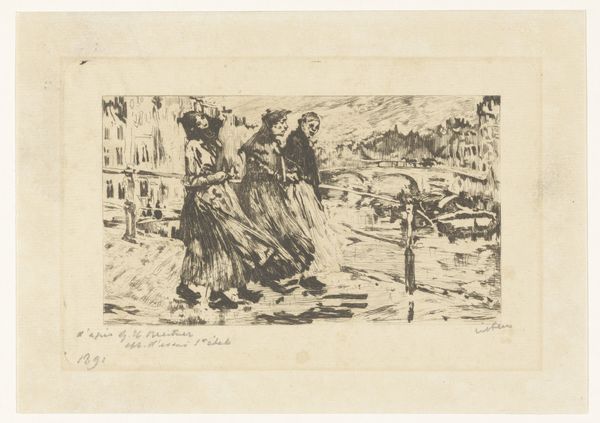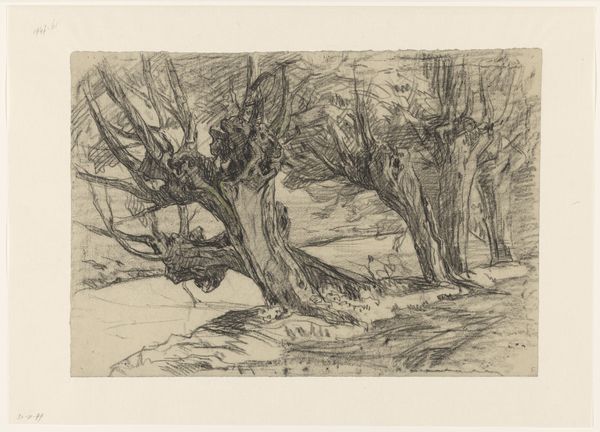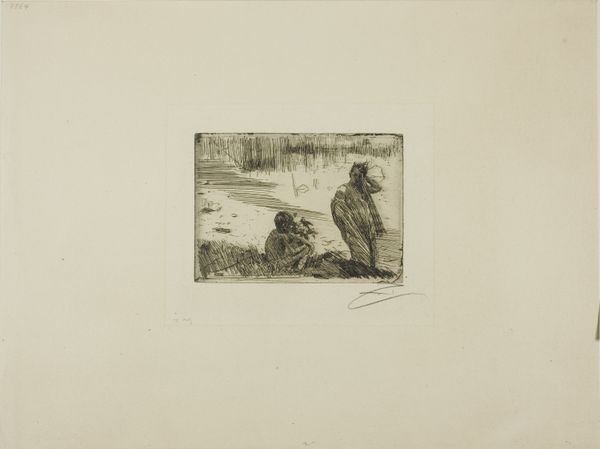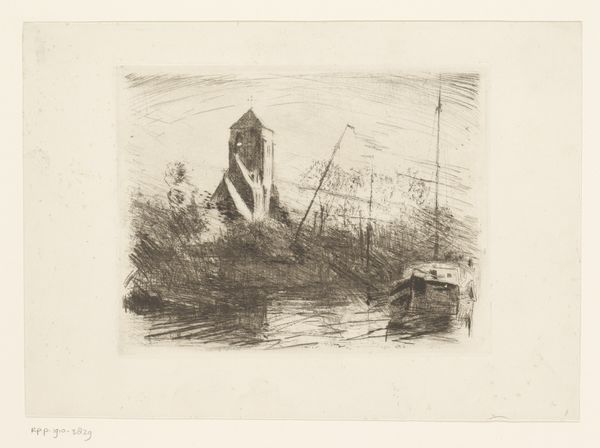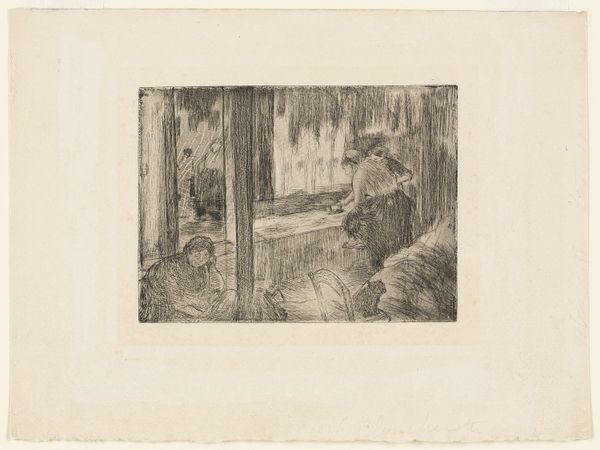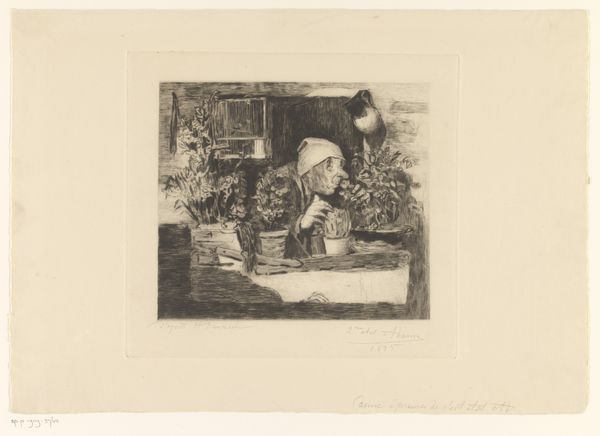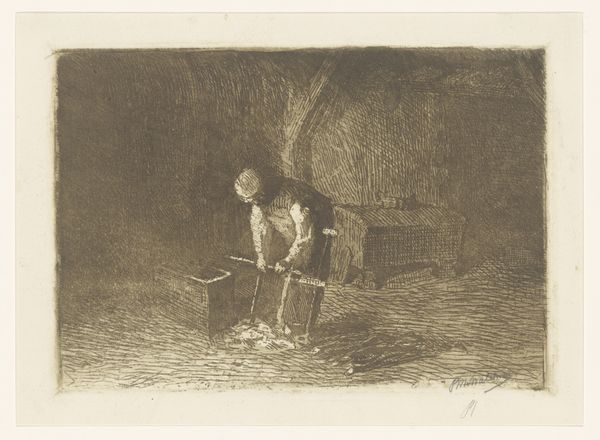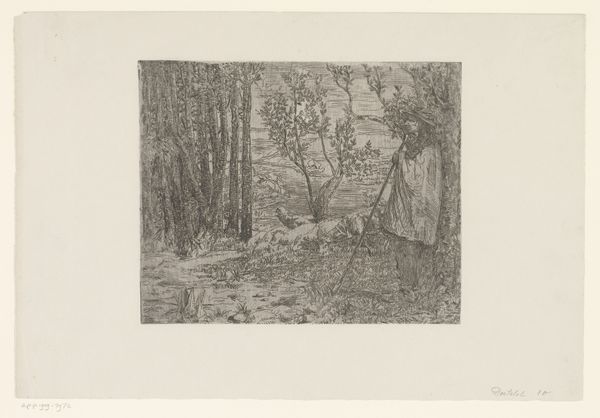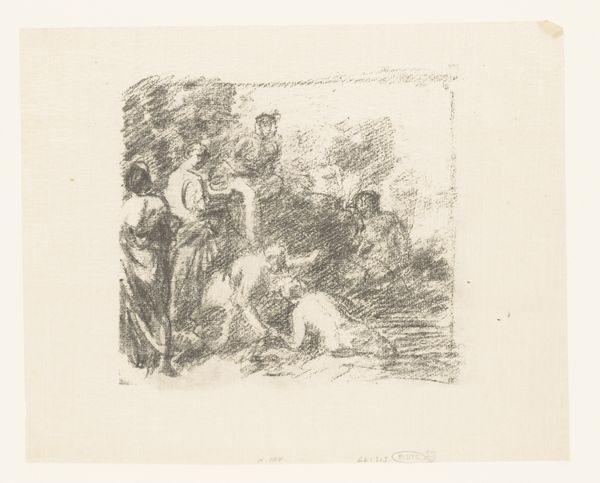
#
pencil drawn
#
photo of handprinted image
#
light pencil work
#
pencil sketch
#
old engraving style
#
ink drawing experimentation
#
ink colored
#
pencil work
#
watercolour illustration
#
watercolor
Dimensions: height 140 mm, width 217 mm
Copyright: Rijks Museum: Open Domain
Curator: This is "Drie vrouwen op een brug in regen en wind," or "Three Women on a Bridge in Rain and Wind," created by Willem Witsen in 1891. It currently resides here at the Rijksmuseum. Editor: My first thought is melancholy. The monochromatic palette and blurred lines create such a sense of dampness and gloom. They really convey a dreary, hard life for the women depicted. Curator: Absolutely. Witsen came from a wealthy family and was deeply engaged in the cultural and social life of Amsterdam, and, through that engagement, this work reflects the societal contrasts between the wealthy and the working class at the time. These women, their postures and clothing suggest a life removed from the comfortable bourgeois existence. Editor: I see that, especially considering how he renders their figures – slightly stooped, almost blending into the misty environment. Their faces are obscured, devoid of individual identity, representative of a broader, often overlooked demographic. It is as though they are being erased by the rain itself. It is the patriarchy's affect on a class struggle. Curator: Right, there's a clear artistic decision here. Witsen's work often captured cityscapes and landscapes, but here he intentionally places these women as subjects, not merely as incidental figures. It elevates their presence while simultaneously highlighting their struggle against the elements, their struggle in Dutch society, perhaps. Editor: I also notice how the bridge functions symbolically, a crossing, perhaps. Is it a transition from one stage of life to another? Is there an element of journey here? Are they leaving something behind? What were these women's options? The weather seems like the least of it. Curator: That reading resonates with the social realities of women in that period. Their lives, opportunities, and movement were often literally and figuratively restricted by societal norms and economic realities. I see a narrative being communicated about their lived experiences that speaks to that. Editor: It's haunting and thought-provoking, this piece. It makes you question who gets remembered, and how, in history, especially considering it's crafted by a man. Curator: Indeed. It prompts us to delve deeper into the historical context, challenging us to examine power structures embedded in both art and society. Editor: Absolutely. This engraving leaves me pondering not only the lives of these women but the untold stories of so many others rendered invisible by historical narratives.
Comments
No comments
Be the first to comment and join the conversation on the ultimate creative platform.

